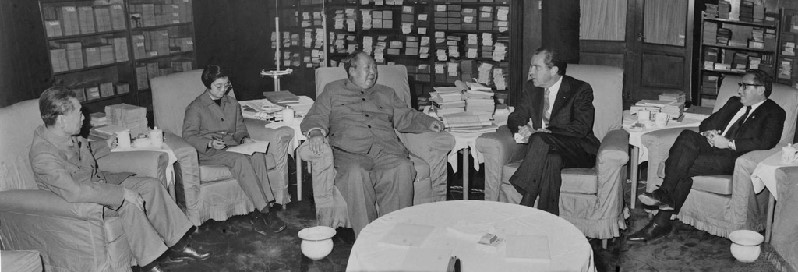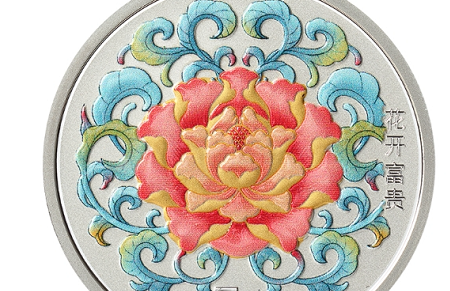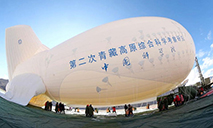In search of rationally renewed China-US ties

Late Chairman Mao Zedong meets with then U.S. President Richard Nixon at Zhongnanhai, the central leadership compound in downtown Beijing, Feb. 21, 1972. (File photo)
This year marks the half-century anniversary of the signing of the Shanghai Communiqué that formed the basis for the establishment of formal ties between China and the United States. It should have been a joyous occasion for both countries that celebrates the many fruitful bilateral and multilateral collaborations and accomplishments that had taken place since then.
But instead, the mood in recent months has been a decidedly muted, even somber, one. Most, if not all, is not well between the two global powers, at least on the official level. There were rather harsh rhetoric exchanged between both sides over both economic and strategic concerns. Most of the deliberately high tariffs that were imposed by the Donald Trump administration on Chinese exports to the US have not been reduced, much less removed, by the Joe Biden administration which is supposed to be otherwise ideologically opposed to the Trump camp.

(Cartoon by Ma Hongliang)
And ideology appears to be of paramount focus to the Biden administration when it comes to international affairs, especially with regard to China. Whereas Trump was somewhat obsessed on touting trade-related issues and disputes with China, Biden and his senior officials delve more on ideological differences and strategic alliances. While seemingly not as concerned with trade – the big elephant in the room – the Biden administration zooms in on China’s human rights practices, and attempts to build coalitions, from the nuclear AUKUS to the broader Quad, that are quite obviously aimed to “contain” China.
As China plays an increasingly important role on the world stage that is roughly commensurate with its status as the second largest economy in the world, traditional global players, the US chief among them, would understandably feel somewhat queasy, even to the extent that they might sense that they are being “crowded out” of their traditional playing fields around the world. But such is the harsh realities of the ebbs and flows of international power politics.
And the reality is perhaps the operative key word here, when it comes to the bilateral interactions between China and the US. The current global reality is such that China is not yet in a position to displace the US as the world’s most potent superpower. But it is equally the unvarnished reality that the US could not obtain in containing the rise of China. So both sides would have to re-examine some of their respective long-held perspectives, and be both rational and pragmatic in accommodating each other’s major concerns and interests in order to move forward more productively together.

Technicians discuss products at a joint venture in Suzhou, Jiangsu province. (HUA XUEGEN/FOR CHINA DAILY)
It is high time, for example, for the Biden administration to explicitly re-embrace the concept and practice of free trade, especially with regard to trade with China. Biden’s predecessor, Trump, has denigrated “free trade” into almost a “dirty” phrase in the minds of many “middle” Americans and it is electorally suicidal for Biden to go all out against it. But just as he was resolute in introducing a number of liberal domestic policies away from the conservatism of Trump, he should also make good use of his powerful office to patiently and creatively explain to the Americans the importance of America re-embracing free trade, not so much for the benefits of China or indeed to the rest of the world, but to normal American consumers who could reap the fruits of cheaper products in abundance, and to American businesses who would be less affected by disruptions in international supply chains that nowadays mostly pass through China. After all, before Trump, America was tireless in championing free trade globally, and that was just half a decade ago. A consequent relaxation of restrictive American trade terms against China could go a long way in ameliorating the tensions between the two major economies.
On the other hand, China side would also have to realise that although the US might geographically be considered an extra-territorial power in South and East China Seas, substantial US military presence in these regions is not uniformly viewed by all regional countries as being destabilising or counter-productive. A number of Southeast Asian countries, big and small, continue to value highly the US military presence in their midst. This must not automatically be construed by the China side as being exuding an anti-China stance. The sooner both China and US recognise the delicate balance of power in these regions, the longer it would go in terms of maintenance of relative peace and security.

Photo taken on Nov. 9, 2021 shows a view at the 26th session of the Conference of the Parties (COP26) to the United Nations Framework Convention on Climate Change in Glasgow, Scotland, the United Kingdom. (Xinhua/Han Yan)
But all hopes are not lost between China and US in restoring their previously warm ties. It might be argued nowadays, for example, that China and the US see eye to eye more than with any other country in terms of the urgency of addressing increasingly acute global climate change. This issue is often summarily buried by the heaps of other economic and strategic issues between the two economic powerhouses that would have to balance their developmental needs against prevention of precious environment. But it is nevertheless a solid base for the two countries to collaborate further and in the process rebuilding their flayed ties. The world deserves rational and pragmatic China-US ties as much as they both do, and speedily so.
Oh Ei Sun is a principal adviser for Malaysia's Pacific Research Center.
The opinions expressed in the article reflect those of the author, and not necessarily those of People's Daily Online.
Photos
 China’s central bank to issue commemorative coins on cultural theme of auspiciousness, including two heart-shaped coins
China’s central bank to issue commemorative coins on cultural theme of auspiciousness, including two heart-shaped coins Population of endangered black-headed gulls exceeds 10,000 mark in NE China’s coastal city of Panjin
Population of endangered black-headed gulls exceeds 10,000 mark in NE China’s coastal city of Panjin China's self-developed floating airship breaks record
China's self-developed floating airship breaks record Chinese germplasm bank conserves biodiversity in warm temperate zone
Chinese germplasm bank conserves biodiversity in warm temperate zone
Related Stories
- China still priority for companies from US
- US 'unqualified' to refer to UN sea law convention: FM
- China urges U.S. to adopt serious measures to truly help ethnic minorities get over trauma
- China urges U.S. to promote regional peace, stability at upcoming U.S.-ASEAN summit
- U.S. urged to adhere to one-China principle
Copyright © 2022 People's Daily Online. All Rights Reserved.






